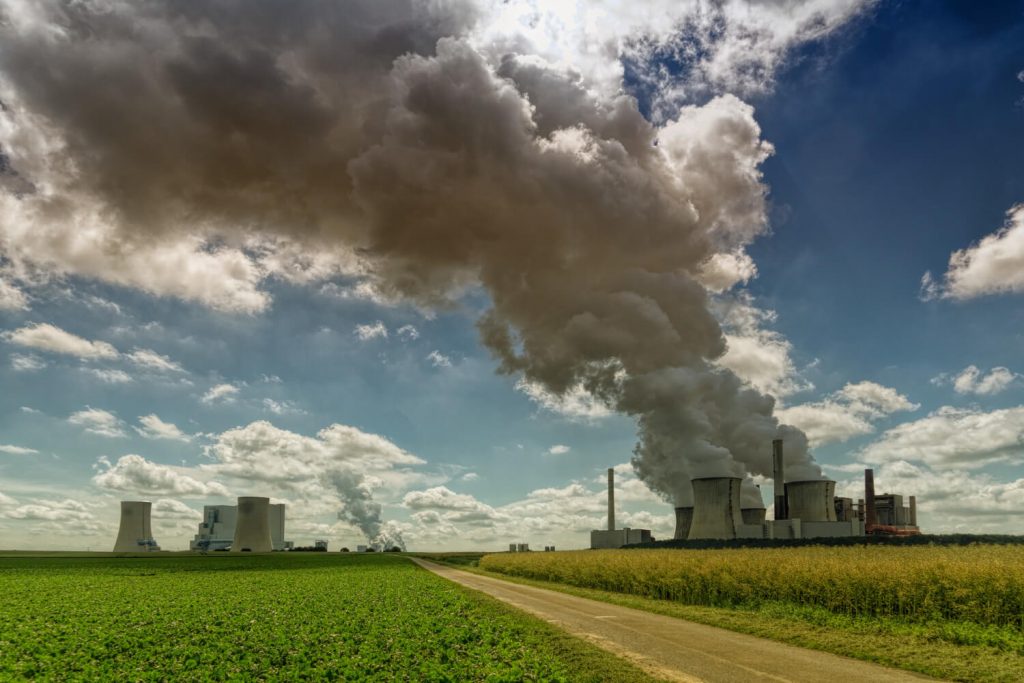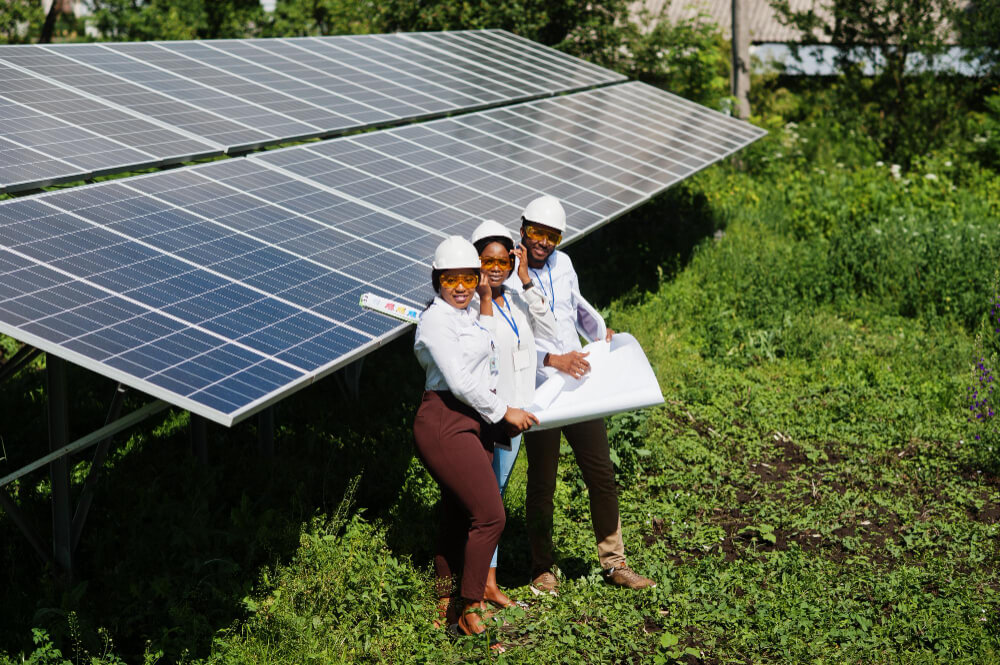Resources > Our Business
Carbon Conundrum Solved: The Ins and Outs of Reducing Emissions through Carbon Credits

Climate change is one of the most pressing issues facing our planet, with the potential to cause severe consequences on ecosystems, economies, and communities. To prevent these impacts and meet the crucial goal set by the Paris Agreement of limiting temperature rise to 1.5°C, it is essential that global net-zero carbon emissions be achieved by mid-century. That said, as a society, we need to take urgent action to significantly reduce our greenhouse gas emissions while also finding ways to remove carbon from the atmosphere. Therefore, as a means of addressing this critical challenge, more and more companies are turning their attention to verified carbon removal and carbon avoidance projects for carbon offsetting.
What is carbon offsetting?
Carbon offsetting refers to the practice of balancing out the emissions produced by human activities through funding projects that reduce or remove carbon from the atmosphere. It is a way for businesses to take responsibility for their unavoidable carbon emissions by purchasing carbon credits created from these projects, representing verified reductions in emissions elsewhere in the world.

The practice is commonly known as “Verified Emission Reduction (VER) credits.” For example, a company in a developed country could invest in a wind farm in a developing country and receive credit for the clean energy generated there. These offsets are designed to compensate for the emissions generated from industrial processes, transportation, and other human activities, by balancing them out with actions or projects that lower CO2 emissions in the atmosphere.
Carbon offsetting vs. Carbon credits
It is important to note that carbon offsetting and carbon credits are related but not the same.
Carbon offsetting is a mechanism through which organizations can invest in environmental projects to mitigate their carbon footprint. These projects, such as renewable energy and reforestation, work to reduce greenhouse gas emissions elsewhere in the system.
On the other hand, carbon credits are a form of currency representing the right to emit a certain amount of greenhouse gases, typically one metric ton of CO2. Carbon credits are used to control and reduce greenhouse gas emissions by creating a market-based system where emitters can buy and sell the rights to emit. There are two types of carbon credits; mandatory and voluntary.

Voluntary carbon credits are carbon credits that are bought and sold voluntarily, typically by individuals, companies, or organizations that want to offset their own emissions. These credits can be generated by various types of carbon offset projects, such as renewable energy, reforestation, and energy efficiency projects.
Mandatory carbon credits, on the other hand, are carbon credits that are required by law or regulation, typically by governments, as a way to enforce emissions reduction targets. These credits are generated by government-approved projects and can be bought and sold in mandatory carbon markets.
The key difference between voluntary carbon credits and mandatory carbon credits is that individuals or organizations buy voluntary carbon credits voluntarily to offset their own emissions. In contrast, mandatory carbon credits are required by law or regulation. The governments create the market to enforce emissions reduction targets.
It is crucial to note that when discussing carbon offsetting, we are referring to the generation of voluntary carbon credits through carbon offset projects. It is essential to remember that carbon offsetting pertains specifically to voluntary carbon credits and voluntary carbon markets.
Utilizing carbon offset credits as a means of addressing climate change
Carbon offset credits are an increasingly important tool in the fight against climate change. They provide a mechanism for organizations and individuals to mitigate their own emissions and support the transition to a low-carbon economy. The Intergovernmental Panel on Climate Change (IPCC) has emphasized the importance of limiting global warming to 1.5 degrees Celsius in order to avoid the most severe impacts of climate change. Carbon offset credits play a critical role in this effort by allowing organizations and individuals to offset their emissions by investing in projects that reduce or remove carbon from the atmosphere.
What are carbon removal projects?
Carbon removal projects, as the name implies, are focused on extracting carbon from the atmosphere. Generally, they are classified into two types: natural methods or nature-based solutions, such as tree planting, which captures carbon as the trees grow, and technological methods or technology-based solutions, such as Direct Air Capture (DAC) technology. It’s important to note that different carbon removal methods carry distinct risks and benefits.
What are carbon avoidance projects?
Also referred to as emission reduction projects, avoidance projects are carbon-reducing initiatives to prevent the release of additional greenhouse gas emissions into the atmosphere. These include renewable energy initiatives, such as building wind farms, industrial pollution reduction projects, and household devices, such as boreholes or cookstove initiatives.
Distinguishing Carbon Removal from Carbon Avoidance
The distinction between carbon removal and carbon avoidance lies in when emissions are targeted. Carbon removal involves actively taking steps to eliminate carbon emissions after they have already been released into the atmosphere. On the other hand, carbon avoidance prevents carbon emissions from being released in the first place.
Both carbon removal and emission reduction projects have the potential to play a crucial role in reaching the goals of the Paris Agreement. Additionally, the project should also have a positive social, economic, or ecological impact, supporting sustainable development. For instance, carbon removal projects can improve air and water quality and protect biodiversity. Similarly, emission reduction projects can enhance energy security, create jobs, and boost economic development in rural areas.

An important thing to note is that for a project to be considered an offsetting project, it must demonstrate a measurable reduction in carbon emissions that is independently verified and meets international standards. These projects are verified to ensure that the emissions reductions or removals claimed by the project developer are real, permanent, and additional.
The verification process thoroughly assesses the project’s design, implementation, and performance. This assessment is typically carried out by an independent third-party verification body accredited by regulatory bodies, such as The Verified Carbon Standard (VCS) and The Gold Standard.
Assessing the Significance of Carbon Offsetting Initiatives in Achieving Net-Zero Emissions
Reducing emissions is essential to combatting the climate crisis and aligning with the trajectory set by climate science. However, it is also essential to acknowledge that completely eliminating emissions in the near term is a significant challenge. As such, businesses and individuals must take responsibility for their current emissions and offset them through investment in low-carbon projects.
To effectively address the climate crisis, a multi-faceted approach is necessary. This includes urgent action to counteract deforestation, support reforestation, and invest in renewable energy and the required infrastructure to expand their reach. Carbon offset credits play a vital role in financing these activities.
It is also essential to support sustainable development in international communities particularly vulnerable to climate change’s impacts. Climate action must be inclusive and promote social justice, and sustainable development must be equitable. Carbon offset projects that focus on additional benefits, such as improving health and well-being and promoting economic prosperity, are particularly important in this regard.
Projects that capture and reduce carbon and avoid emissions will be vital tools on the journey to a net-zero future and achieving the emissions reductions necessary to keep global temperature increase below 1.5°C. Given the limited time available to respond to the climate emergency, these projects are crucial to achieving our goals in a timely manner.

Net Zero: Driving the transition to a sustainable economy
At Net Zero, we are committed to helping companies achieve their sustainability goals through the use of carbon offsetting and carbon credits. As a provider of carbon offsetting services, we understand the importance of ensuring that carbon neutrality and net zero claims are based on climate science and that emission reduction projects adhere to globally recognized standards. Our team of experts works closely with our clients to identify and develop Voluntary Emission Reduction (VER) projects independently audited by third-party organizations to ensure their credibility and integrity.
We are dedicated to helping businesses mitigate their environmental impact and participate in the transition to a more sustainable future. Whether you’re looking to offset your unavoidable emissions or to develop your own carbon credits for trading in the voluntary carbon market, we have the expertise and experience to help you achieve your goals.



